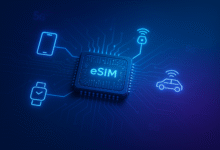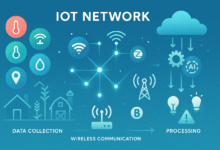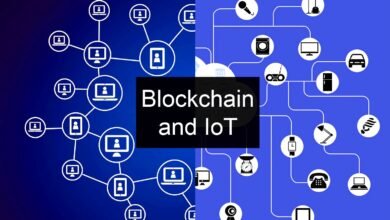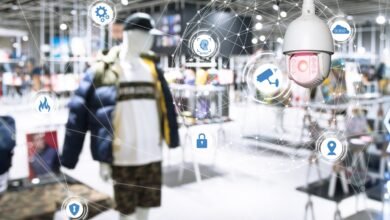Breaking Down the Latest Global IoT Regulations and Standards
Navigate the evolving landscape of global IoT regulations and standards in 2025. Understand ETSI EN 303 645, Cyber Resilience Act, and compliance requirements.
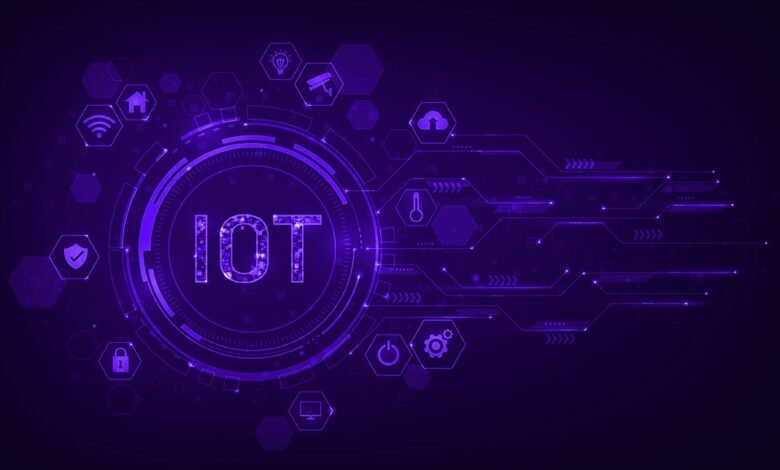
The Internet of Things (IoT) regulatory landscape is experiencing unprecedented transformation as governments worldwide implement stringent cybersecurity measures to protect consumers and critical infrastructure. With over 30 billion connected devices expected globally by 2027, the urgency for comprehensive IoT regulations has never been greater. From the European Union’s groundbreaking Cyber Resilience Act to the United States’ Cyber Trust Mark program, manufacturers face a complex web of global IoT standards that demand immediate attention.
The shift from voluntary guidelines to mandatory IoT cybersecurity standards represents a fundamental change in how connected devices are developed, tested, and deployed. These regulations address growing concerns about vulnerable consumer IoT devices that have become attractive targets for cybercriminals. As 80% of global consumers indicate they would stop doing business with companies after a cyberattack, compliance with IoT device security standards has become both a legal requirement and a business imperative. Understanding these evolving frameworks is essential for manufacturers, distributors, and businesses operating in the connected device ecosystem.
The Driving Forces Behind Global IoT Regulations
Rising Cybersecurity Threats
The exponential growth in connected devices has created an unprecedented attack surface that cybercriminals actively exploit. IoT cybersecurity compliance has become critical as these devices often lack traditional security measures like firewalls and antivirus software. Recent analyses indicate that IoT security frameworks must address vulnerabilities in devices ranging from smart home appliances to industrial control systems.
The economic impact of cyber threats continues to escalate, with projected costs reaching $10.5 trillion by 2025. This staggering figure represents a 15% annual increase, underscoring why regulatory bodies worldwide are implementing mandatory cybersecurity baseline requirements for digital products with digital elements.
Consumer Protection Needs
Consumers increasingly rely on Internet of Things security for their daily activities, from smart home management to health monitoring. However, many users lack awareness of the security risks associated with their connected devices. IoT compliance regulations aim to bridge this knowledge gap by ensuring products meet minimum security standards before reaching the market.
The introduction of visible security labeling programs, such as certification marks and CE marking requirements, empowers consumers to make informed decisions about IoT device security. These initiatives represent a shift toward transparency in product cybersecurity capabilities.
Key Global IoT Cybersecurity Standards
ETSI EN 303 645: The Global Baseline
ETSI EN 303 645 stands as the first globally applicable cybersecurity standard for consumer IoT devices. Developed by the European Telecommunications Standards Institute, this comprehensive framework establishes security by design principles that span 13 cybersecurity categories and 68 detailed provisions.
The standard addresses fundamental security requirements including:
- No default passwords for device access
- Implementation of vulnerability disclosure policies
- Secure software updates throughout device lifecycle
- Data protection provisions for personal information
- Secure communication protocols and encryption
- Minimization of exposed attack surfaces
This framework serves as the foundation for numerous national and regional regulations, including the UK’s PSTI regulation and Singapore’s Cybersecurity Labelling Scheme. Device manufacturers worldwide recognize ETSI EN 303 645 as the gold standard for establishing IoT security frameworks.
EN 18031 Series: Enhanced European Requirements
The EN 18031 series represents the evolution of European IoT cybersecurity standards, specifically designed to meet Radio Equipment Directive (RED) requirements. Unlike ETSI EN 303 645, which focuses on consumer IoT devices, EN 18031 covers all network-connected radio equipment, including laptops, smartphones, and routers.
This comprehensive standard series includes:
- EN 18031-1: General cybersecurity requirements
- EN 18031-2: Data protection and fraud prevention measures
- EN 18031-3: Advanced security protocols for critical applications
The EN 18031 series is expected to become a harmonized standard under the forthcoming Cyber Resilience Act, establishing it as a cornerstone of European connected device regulations.
Regional Regulatory Frameworks
European Union: Cyber Resilience Act
The Cyber Resilience Act (CRA) represents the most comprehensive IoT regulations framework globally, establishing mandatory cybersecurity requirements for all digital products with digital elements sold in the EU market. This landmark legislation, which entered into force on December 10, 2024, will fundamentally transform how manufacturers approach product cybersecurity requirements.
Key CRA Requirements
The CRA introduces essential requirements across two primary categories:
Product Cybersecurity Requirements:
- Security by design implementation from development phase
- Comprehensive risk assessments before market placement
- Vulnerability management throughout product lifecycle
- Secure default configurations and authentication mechanisms
- Automatic security updates with user opt-out capabilities
Vulnerability Handling Process Requirements:
- Incident reporting within 24 hours to ENISA
- Continuous monitoring for exploitable vulnerabilities
- Documentation retention for 10 years post-market
- Supply chain security assessments
- IoT certification through accredited testing laboratories
Implementation Timeline
The CRA follows a phased implementation approach:
- September 11, 2026: Vulnerability reporting obligations begin
- December 11, 2027: Full compliance requirements mandatory
Products are classified into three risk categories: default, important, and critical, with corresponding compliance requirements. Critical IoT devices must undergo third-party conformity assessments before receiving CE marking approval.
United States: Cyber Trust Mark Program
The U.S. Cyber Trust Mark program launches in 2025 as a voluntary certification initiative designed to help consumers identify secure connected devices. Administered by the Federal Communications Commission (FCC), this program addresses IoT cybersecurity compliance through recognizable product labeling.
Program Requirements
To obtain Cyber Trust Mark certification, device manufacturers must:
- Submit products for evaluation by FCC-accredited laboratories
- Demonstrate compliance with established cybersecurity standards
- Implement secure authentication and access controls
- Provide transparent security update policies
- Maintain documentation of security practices
The program focuses on consumer IoT devices including smart speakers, security cameras, and connected home appliances, specifically excluding computers and smartphones from its scope.
United Kingdom: PSTI Regulation
The UK’s Product Security and Telecommunications Infrastructure (PSTI) Act establishes mandatory security requirements for Internet of Things devices sold in the UK market. This regulation emphasizes three core security features:
- Unique default passwords for each device
- Vulnerability disclosure policies for security researchers
- Transparent software update practices with minimum support periods
The PSTI regulation applies to consumer IoT devices that connect to networks and significantly influences global IoT security frameworks through its practical approach to baseline security requirements.
Industry-Specific Standards and Protocols
Industrial IoT Compliance
Industrial IoT (IIoT) deployments require specialized cybersecurity standards that address operational technology environments. The IEC 62443 series provides a globally recognized framework for industrial automation and control systems cybersecurity.
Key components include:
- Risk assessment methodologies for OT networks
- Security level definitions for critical infrastructure
- Vulnerability management protocols for industrial environments
- Access control frameworks for operational systems
Industry 5.0 trends emphasize human-machine integration and sustainable practices, driving protocols with low-power consumption and renewable energy considerations.
Healthcare IoT Security
Internet of Medical Things (IoMT) devices face unique regulatory challenges due to patient safety implications. Device manufacturers must navigate FDA cybersecurity guidance alongside traditional IoT compliance requirements.
Essential considerations include:
- HIPAA compliance for patient data protection
- Medical device cybersecurity frameworks
- Vulnerability disclosure processes for critical care equipment
- Post-market surveillance requirements
Data Privacy and Cross-Border Compliance
GDPR Integration
The General Data Protection Regulation (GDPR) significantly impacts IoT cybersecurity standards by establishing strict requirements for personal data processing. Connected devices that collect, store, or transmit personal information must implement:
- Privacy by design principles
- Data minimization practices
- User consent mechanisms
- Data protection impact assessments
- Cross-border data transfer safeguards
Global Data Sovereignty
IoT regulations increasingly emphasize national data sovereignty, creating complex compliance requirements for device manufacturers operating across multiple jurisdictions. Countries implementing strict data localization requirements include:
- China: Cybersecurity Law and Data Security Law
- India: Personal Data Protection Bill requirements
- Brazil: Lei Geral de Proteção de Dados (LGPD)
- Russia: Federal Law on Personal Data
These regulations often require IoT service registration and local data processing capabilities for connected device deployments.
Certification and Testing Requirements
Third-Party Assessment Programs
IoT certification increasingly requires independent validation through accredited testing laboratories. Leading certification programs include:
UL 2900 Series:
- Comprehensive cybersecurity evaluation for network-connected devices
- Software vulnerability assessments
- Security architecture reviews
Common Criteria Certification:
- International standard for computer security certification
- Formal security target development
- Independent security testing
SESIP Certification:
- Security evaluation standard for IoT platforms
- Hardware and software security assessment
- Supply chain security validation
Conformity Assessment Procedures
The ETSI TS 103 701 specification provides detailed IoT cybersecurity compliance testing methodologies for ETSI EN 303 645 requirements. This assessment framework enables:
- Standardized testing procedures across laboratories
- Comparable security evaluation results
- Self-assessment capabilities for manufacturers
- Third-party validation options
Challenges in Implementation
Technical Complexity
IoT cybersecurity standards implementation faces several technical challenges:
Legacy System Integration:
- Existing infrastructure compatibility issues
- Software update capability limitations
- Resource constraints on low-power devices
- Interoperability requirements across platforms
Cost Considerations:
- IoT certification testing expenses
- Security feature development costs
- Ongoing vulnerability management resources
- Documentation and compliance overhead
Supply Chain Security
Connected device manufacturers must address security throughout complex global supply chains. Key challenges include:
- Component-level security verification
- Third-party software vulnerability assessment
- Hardware integrity validation
- Supply chain transparency requirements
The Cyber Resilience Act specifically addresses these concerns through Software Bill of Materials (SBOM) requirements and supplier security assessments.
Future Trends and Developments
Harmonization Efforts
Global regulatory bodies are working toward IoT standards harmonization to reduce compliance complexity for device manufacturers. Initiatives include:
- International cooperation on cybersecurity baseline requirements
- Mutual recognition agreements between jurisdictions
- Standardized IoT certification procedures
- Common vulnerability disclosure frameworks
Emerging Technologies Impact
Artificial intelligence and 5G technology integration will significantly influence future IoT regulations:
AI-Enhanced Security:
- Automated vulnerability management systems
- Intelligent threat detection capabilities
- Machine learning-based security assessments
5G Network Security:
- Enhanced data transfer capabilities
- Network slicing security requirements
- Edge computing security frameworks
- Quantum-resistant encryption for critical applications
Industry 5.0 Implications
The evolution toward Industry 5.0 emphasizes sustainability and human-centric design, influencing IoT security frameworks through:
- Energy-efficient security protocols
- Carbon footprint considerations in IoT compliance
- Human-machine interface security requirements
- Sustainable lifecycle management practices
Best Practices for Compliance
Proactive Security Implementation
Device manufacturers should adopt comprehensive approaches to IoT cybersecurity compliance:
Development Phase:
- Implement security by design principles from project inception
- Conduct regular security architecture reviews
- Establish vulnerability management processes
- Create comprehensive documentation systems
Testing and Validation:
- Engage IoT certification bodies early in development
- Perform regular penetration testing
- Validate compliance with applicable IoT standards
- Implement continuous security monitoring
Market Deployment:
- Establish incident response procedures
- Maintain software update capabilities
- Monitor threat intelligence for emerging vulnerabilities
- Provide clear security guidance to end users
Documentation and Record Keeping
Comprehensive documentation is essential for IoT compliance across all regulatory frameworks. Required elements include:
- Security risk assessments and mitigation strategies
- Vulnerability disclosure policies and procedures
- Software update schedules and support commitments
- Third-party component security evaluations
- Incident response and notification procedures
Authoritative Resources and Standards Organizations
Understanding global IoT standards requires engagement with key standards organizations and regulatory bodies. The European Telecommunications Standards Institute (ETSI) provides comprehensive guidance on consumer IoT cybersecurity standards, including detailed implementation guidelines for ETSI EN 303 645.
The Federal Communications Commission (FCC) offers essential information about the U.S. Cyber Trust Mark program, including certification procedures and testing requirements for connected devices.
Conclusion
The global IoT regulations landscape is rapidly evolving toward mandatory cybersecurity requirements that fundamentally change how connected devices are developed, tested, and deployed. From the comprehensive Cyber Resilience Act in Europe to the Cyber Trust Mark program in the United States, manufacturers must navigate complex regulatory frameworks while maintaining innovation and market competitiveness. Success requires proactive implementation of security by design principles, early engagement with IoT certification bodies, and comprehensive understanding of regional compliance requirements. As these regulations fully take effect between 2025 and 2027, organizations that prioritize IoT cybersecurity compliance will gain significant competitive advantages while contributing to a more secure global connected ecosystem. The investment in robust IoT security frameworks today will determine market access and consumer trust in tomorrow’s increasingly connected world.
